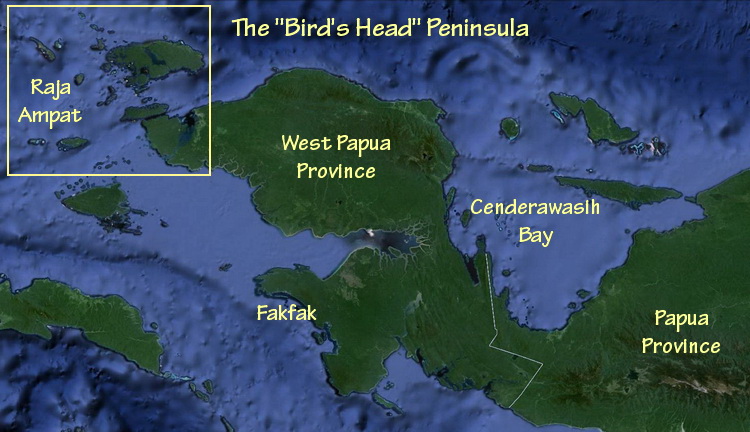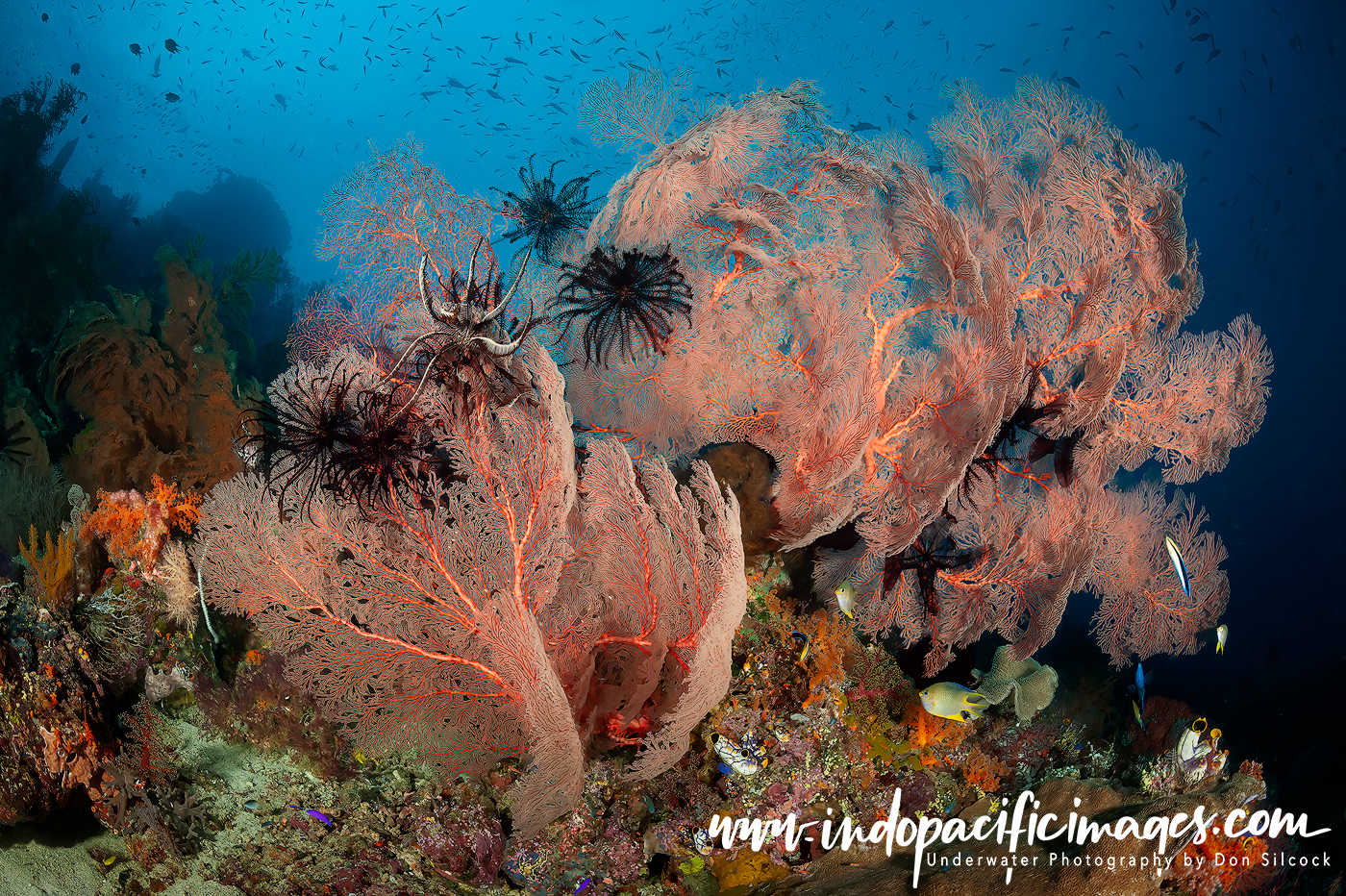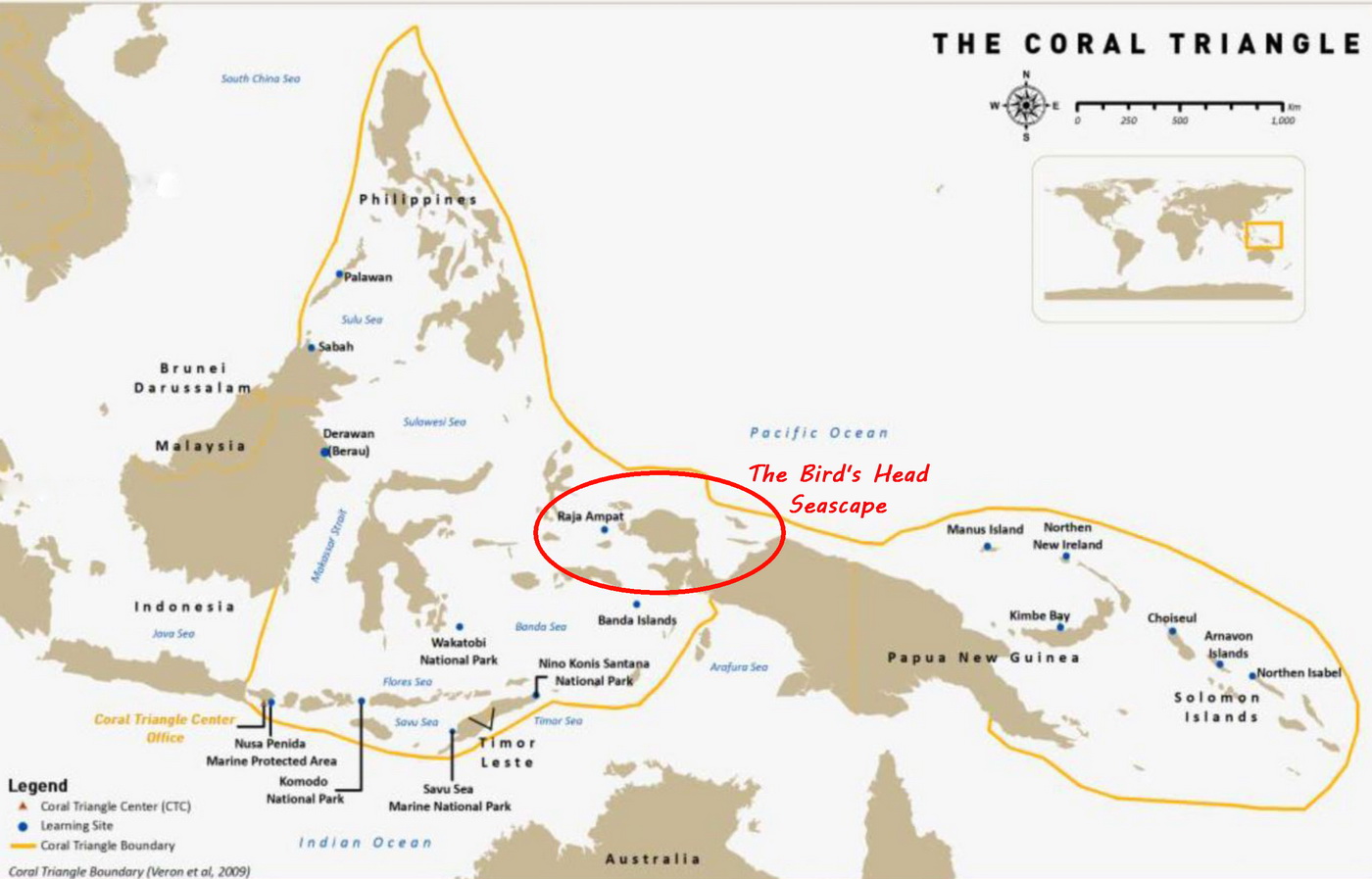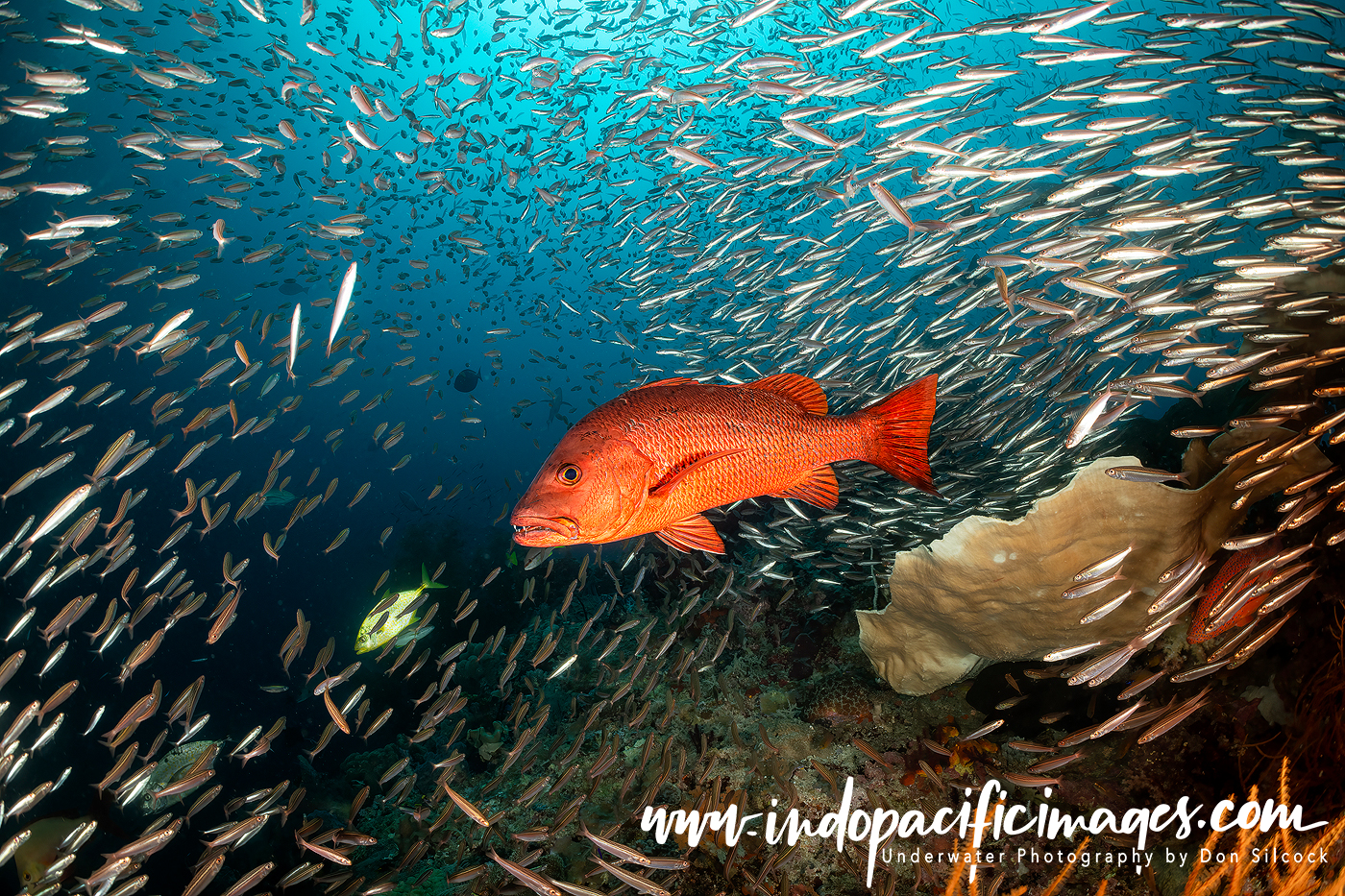
Understanding the Bird’s Head Seascape… The Vogelkop, or “Bird’s Head”, is the large peninsula that makes up the north-west tip of Indonesia’s West Papua province.
Covering an overall area roughly the same as Great Britain, it is made of four main regions – Raja Ampat, Cenderawasih, Kaimana and Misool.
Dutch navigators gave the area its unusual name when they mapped the area in the 16th century. Apparently they thought the huge island of New Guinea, which West Papua forms the western half of, looked like the body of a bird.
And… the distinctive shape of the penninsula looked like the bird’s head!
The Bird’s Head peninsula, and in particular Raja Ampat, is renowned for its incredible biodiversity. But as recently as the early 1990’s the area was as much a mystery to the world as the rest of West Papua. Remote, densely forested and sparesly populated…

Understanding The Bird’s Head Seascape – The Pioneers
As divers, we can thank pioneers like Max Ammer and Edi Frommenwiler for discovering that biodiversity. Max first ventured to Raja Ampat in the late 1980’s, while Edi arrived on his newly built boat the Pindito a few years later. Other adventurers were to follow, but Max’s work establishing the first land-based scuba diving in the Dampier Strait. Together with Edi’s exploration of the overall area paved the way!
The term “seascape” evolved as the scale of that underwater diversity became apparent and (most importantly) was quantified. Many people were involved in that work. But the marine scientists Mark Erdmann and Gerry Allen, together with underwater photojournalists Burt Jones and Maurine Shimlock really do stand out.
But, there is a dark side to this story… Because as the wonders of the Bird’s Head Seascape became apparent its large area, remote location and complete lack of any form of protection or oversight exposed it to rampant exploitation. Unregulated commercial fishing, poaching and dynamite fishing caused immense damage to what was effectively an underwater paradise.
Understanding The Bird’s Head Seascape – The Coral Triangle
The key to understanding the marine biodiversity of the Bird’s Head Seascape is its location… Basically the overall area of the seascape is the geographical epicenter of the Coral Triangle.

Renowned as the richest area of marine life and coral diversity in the world, the Coral Triangle covers a total area of some 6 million km2. It stretches from central Indonesia to the eastern tip of the Solomon Islands and includes parts of Sabah in Malaysia, all of the Philippines and all of Papua New Guinea. Which means that it encompasses segments of two distinct biogeographic regions – the Indonesian-Philippines Region and the Far Southwestern Pacific Region.
Why only parts of Indonesia and Malaysia but all of the Philippines, PNG and the Solomons? Well… to effectively delineate between regions the marine scientists and conservationists who helped create the overall concept of the Coral Triangle used a benchmark of 500 species of coral together with high reef fish biodiversity as the price of entry.
The Coral Triangle’s Biodiversity
In terms of overall biodiversity of the Coral Triangle, the numbers are staggering:
- Of the 798 species of coral globally, 605 (76%) are found in the Coral Triangle, which is the highest coral diversity in the world.
- There are some 6,000 species of coral reef fish in the world and 2,228 (37%) can be found in the Coral Triangle, again the highest coral reef fish diversity in the world.
- Of the more than 13,000 species of marine environment bony fishes in the world, some 3,000 (23%) are found in the Coral Triangle.
- 6 of the world’s 7 marine turtle species (including the endangered leatherback) are found in the Coral Triangle.
- 950 species of molluscs.
- 458 species of crustaceans.
Perhaps an easier way to conceptualize all those numbers is that in terms of overall marine biodiversity the Coral Triangle has 2-3 times that of the Red Sea and 3-5 times that of the Caribbean! All in a total area that covers just 1.6% of the planet’s oceanic area.

The Bird’s Head Seascape – Why So Biodiverse?
Good question… so why is the Coral Triangle so biodiverse? And, why is so much of that biodiversity found in the Bird’s Head Seascape? The answer is incredibly complex, but the fundamental catalyst for it all is the Indonesian Throughflow.

The Throughflow is one of the largest movements of water on the planet and an incredibly powerful force of nature. So much water flows that a special measurement had to be developed to quantify it – the “Sverdrup.”
The basic mechanism behind the Indonesian Throughflow though is quite basic. There is a difference in sea-level between the Pacific Ocean to the north and the Indian Ocean to the south.
The massive disparity is created by the trade winds and associated oceanic currents. Which act in opposite directions in the northern and southern hemispheres.
But the overall result is that massive movement of water. Which flows south through the Indonesian archipelago and east towards the Solomon Islands
And carried with it are the eggs and larvae of the Indo-Pacific region marine life. Along with the detritus of the sea, rich with nitrogen and phosphurous nutrients, swept up from the deep offshore basins.
Those eggs, larvae and nutrients are the the life-force of the Coral Triangle. And one of the very first places they touch land is the Bird’s Head Seascape!
